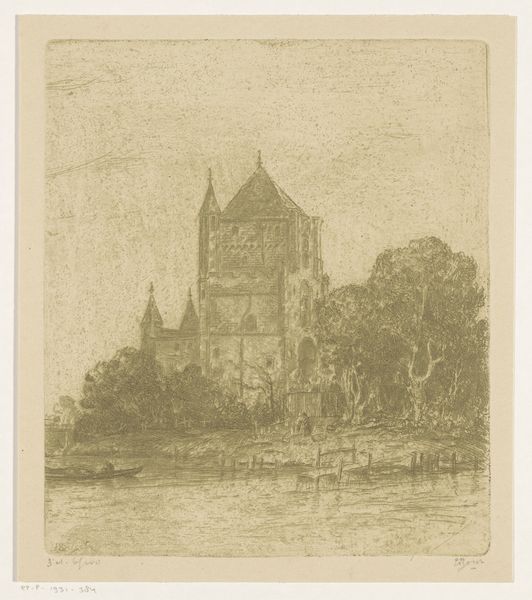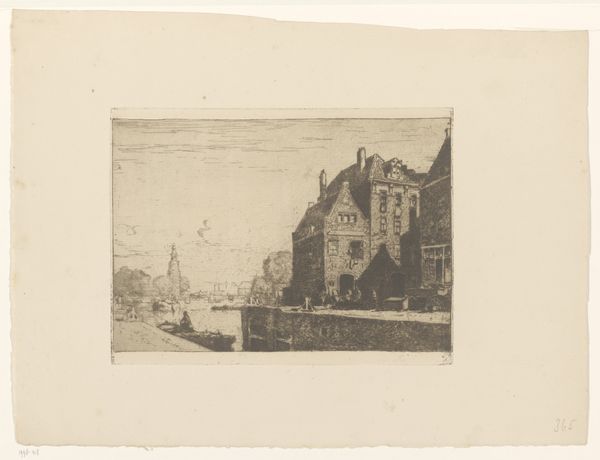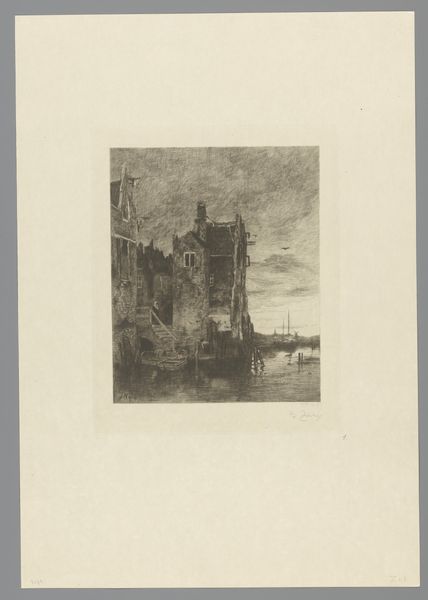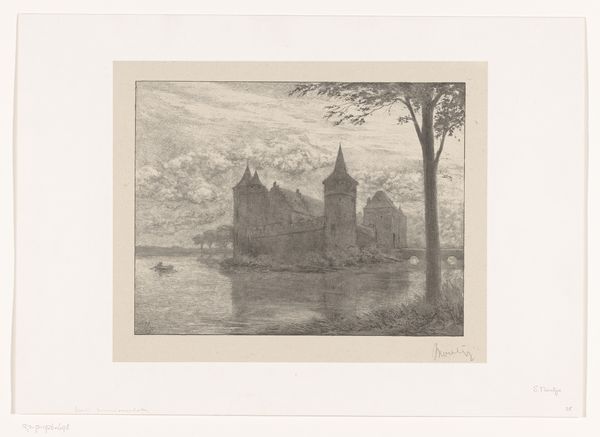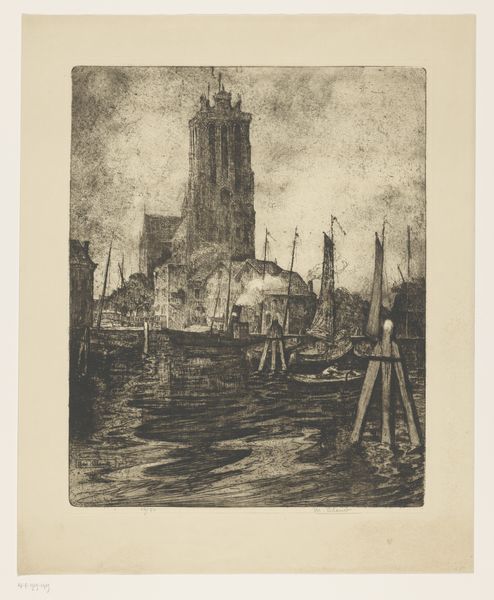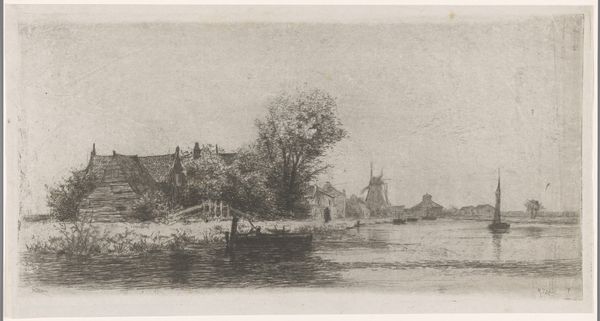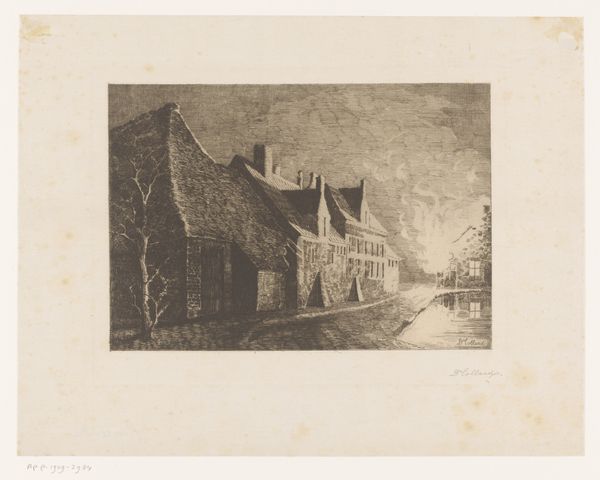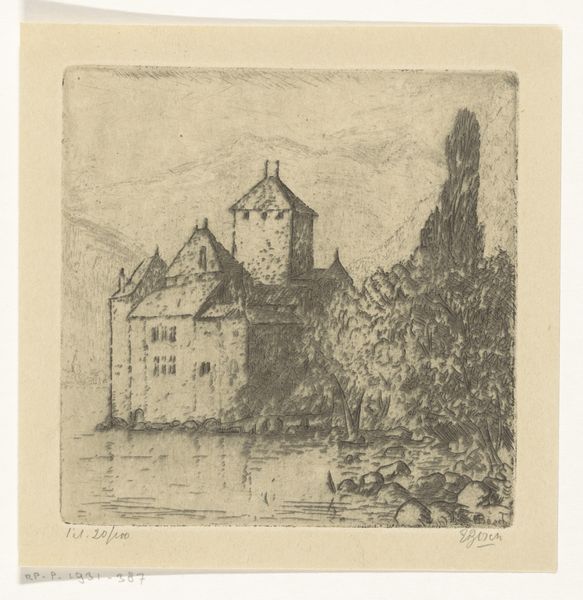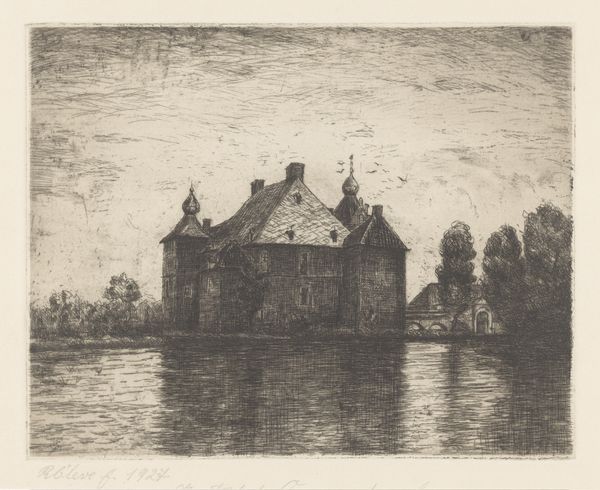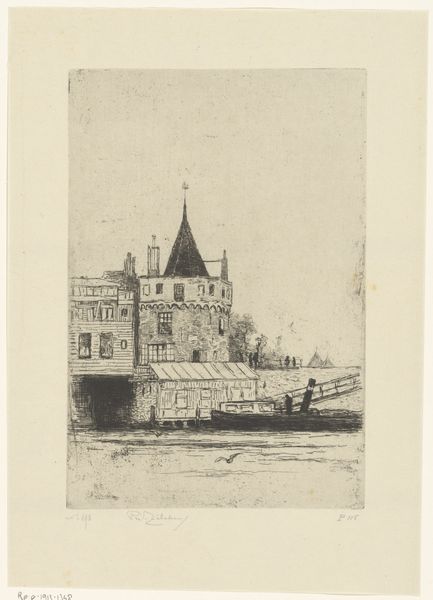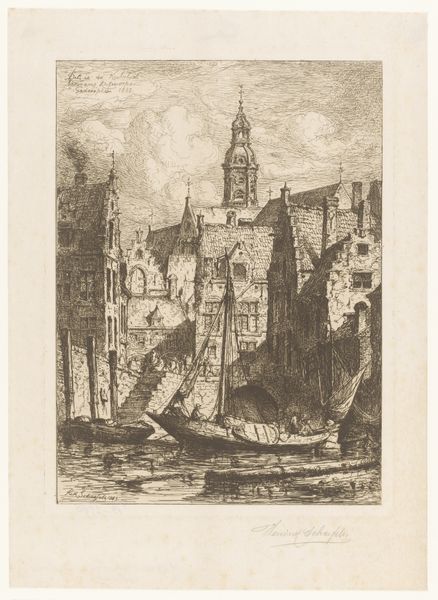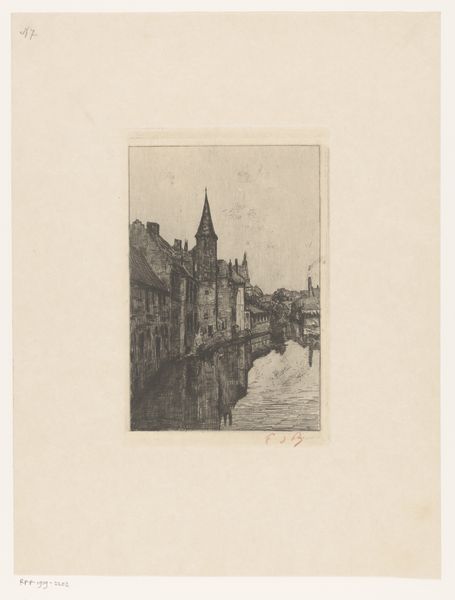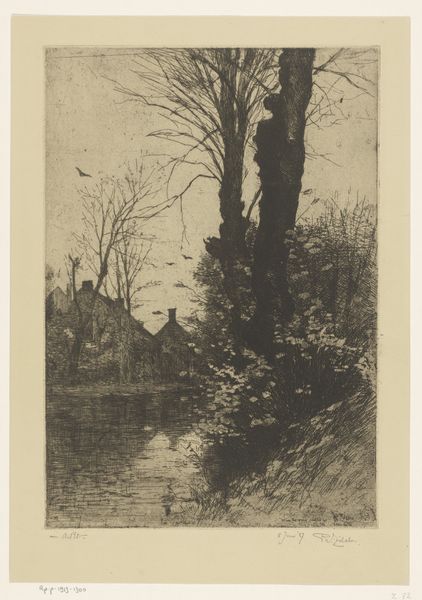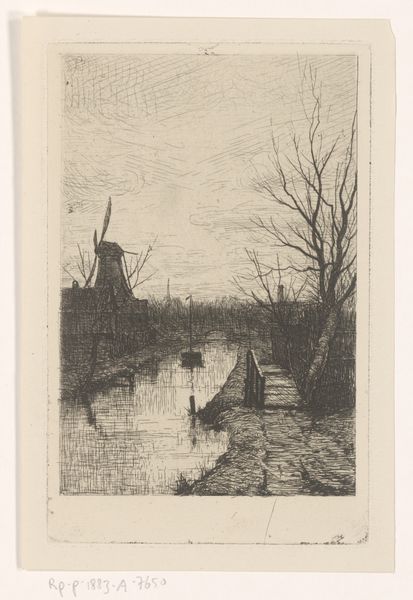
print, etching
#
dutch-golden-age
# print
#
etching
#
old engraving style
#
landscape
#
pencil drawing
#
cityscape
#
pencil work
Dimensions: height 294 mm, width 196 mm
Copyright: Rijks Museum: Open Domain
Editor: This is "Amsterdamse poort in Haarlem," created between 1869 and 1937 by Anton L. Koster, an etching printed on paper. I’m immediately struck by the contrast between the imposing medieval gate and the distant industrial chimneys. How do you interpret that juxtaposition? Curator: Precisely! Considering this etching through a materialist lens, we see a fascinating layering of histories etched onto the paper. The labor-intensive process of etching, meticulously rendering each line, contrasts starkly with the burgeoning industrial landscape depicted. We must consider what types of labor are required to make the print itself? What type of labor occurred inside the Amsterdamse Poort? And how does that compare with the factory labour suggested in the background? Editor: So, you're suggesting that the choice of etching as a medium emphasizes the hand-crafted nature of the artwork itself? Curator: Exactly! The choice wasn't arbitrary. Etching, a process rooted in craft, becomes a means of documenting and, perhaps, questioning the shift towards industrialized modes of production, especially when seen beside the Port. This piece isn't just a picturesque scene; it's a commentary on changing material conditions. Who had access to such views of the port? What kind of social message is implied by its aesthetic rendering? Editor: That’s really interesting. I hadn’t thought about how the medium itself adds to the meaning. It prompts a deeper reading beyond the surface-level representation. Curator: Precisely. Considering the work this way helps to tease out tensions. In what other ways is tension depicted? Editor: Thinking about the social implications, the etching reminds us of past ways of life in contrast to burgeoning industrial progress. Curator: Indeed. I see now how useful this work is in examining both its processes of construction, and the cultural forces in its environment. Editor: I never would have considered the labor behind its production otherwise. Thanks for widening my perspective!
Comments
No comments
Be the first to comment and join the conversation on the ultimate creative platform.
